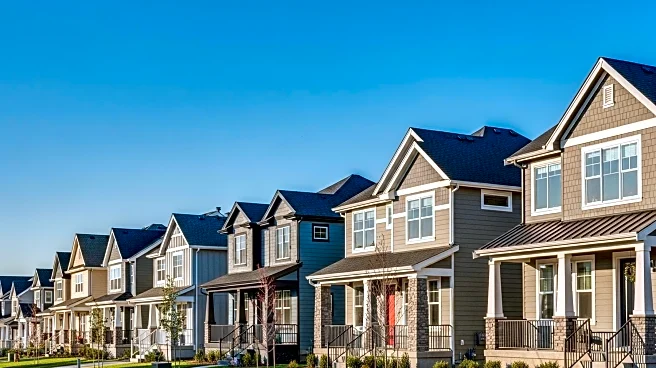What is the story about?
What's Happening?
The U.S. housing market, valued at over $55 trillion as of June 2025, has seen significant shifts in value concentration. One-third of this value is concentrated in nine metro areas, each with valuations exceeding $1 trillion. However, recent trends indicate a shift in housing wealth distribution, with smaller markets gaining prominence. New construction has added $2.5 trillion to national housing value since 2020, with significant contributions from states like Utah, Texas, Idaho, and Florida. Despite these gains, a 'chronic affordability crisis' is putting downward pressure on home prices in major markets, leading to a more balanced housing market.
Why It's Important?
The changing dynamics in the U.S. housing market reflect broader economic trends and regional shifts. The concentration of housing wealth in a few metro areas highlights the ongoing challenges of affordability and access to housing. The rise of smaller markets suggests a potential redistribution of economic activity and population growth, which could impact local economies and infrastructure. The role of new construction in driving housing value underscores the importance of addressing supply constraints to meet demand. These trends have significant implications for policymakers, real estate investors, and homebuyers, as they navigate a complex and evolving market landscape.
What's Next?
Future developments in the housing market will likely be influenced by changes in mortgage rates, which could affect buyer competition and price trends. The projected increase in national home price growth from 1.4% to 3.9% over the next year suggests potential upward pressure on prices. Policymakers and industry stakeholders will need to address affordability challenges and support sustainable housing development to ensure a balanced market. Additionally, the continued monitoring of regional market conditions will be crucial in understanding the broader economic implications of these shifts.
Beyond the Headlines
The evolving housing market dynamics raise questions about long-term urban planning and the sustainability of current growth patterns. The concentration of wealth in specific areas may exacerbate economic disparities, necessitating targeted policy interventions. The role of new construction in shaping market trends highlights the need for innovative solutions to address housing supply and affordability. As the market continues to evolve, stakeholders must consider the broader social and economic impacts of these changes.
AI Generated Content
Do you find this article useful?















